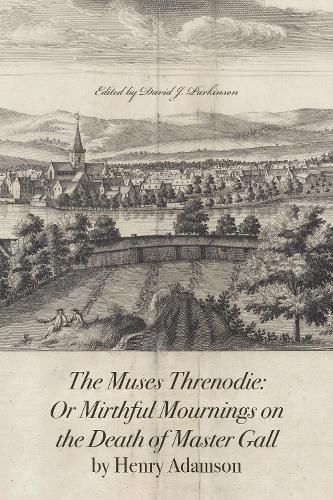Readings Newsletter
Become a Readings Member to make your shopping experience even easier.
Sign in or sign up for free!
You’re not far away from qualifying for FREE standard shipping within Australia
You’ve qualified for FREE standard shipping within Australia
The cart is loading…






This edition of a seventeenth-century Scottish poem gives modern audiences insight into the ways previous generations perceived and engaged with local nature and architecture.
Henry Adamson's "The Muses Threnodie" (1638) offers insights into the lives, amusements and anxieties of of the residents of the town of Perth. In it, two of Perth's citizens venture out on foot and by boat into the vicinity of their cramped, closely overseen town. In whimsically funny conversations, they observe local natural phenomena and landmarks while discussing the buried, ruined evidence of the region's architectural history. Their perceptions of waterways and landforms highlight their sometimes conflicted understanding of historical change at Perth on the eve of the Scottish National Covenant.
The beguilingly inglorious verse in which Henry Adamson clothes his characters' sentiments serves as the outermost layer of several stylistic misdirections, as if to distract official attention from any dangerous contemporary criticism within.
$9.00 standard shipping within Australia
FREE standard shipping within Australia for orders over $100.00
Express & International shipping calculated at checkout
This edition of a seventeenth-century Scottish poem gives modern audiences insight into the ways previous generations perceived and engaged with local nature and architecture.
Henry Adamson's "The Muses Threnodie" (1638) offers insights into the lives, amusements and anxieties of of the residents of the town of Perth. In it, two of Perth's citizens venture out on foot and by boat into the vicinity of their cramped, closely overseen town. In whimsically funny conversations, they observe local natural phenomena and landmarks while discussing the buried, ruined evidence of the region's architectural history. Their perceptions of waterways and landforms highlight their sometimes conflicted understanding of historical change at Perth on the eve of the Scottish National Covenant.
The beguilingly inglorious verse in which Henry Adamson clothes his characters' sentiments serves as the outermost layer of several stylistic misdirections, as if to distract official attention from any dangerous contemporary criticism within.